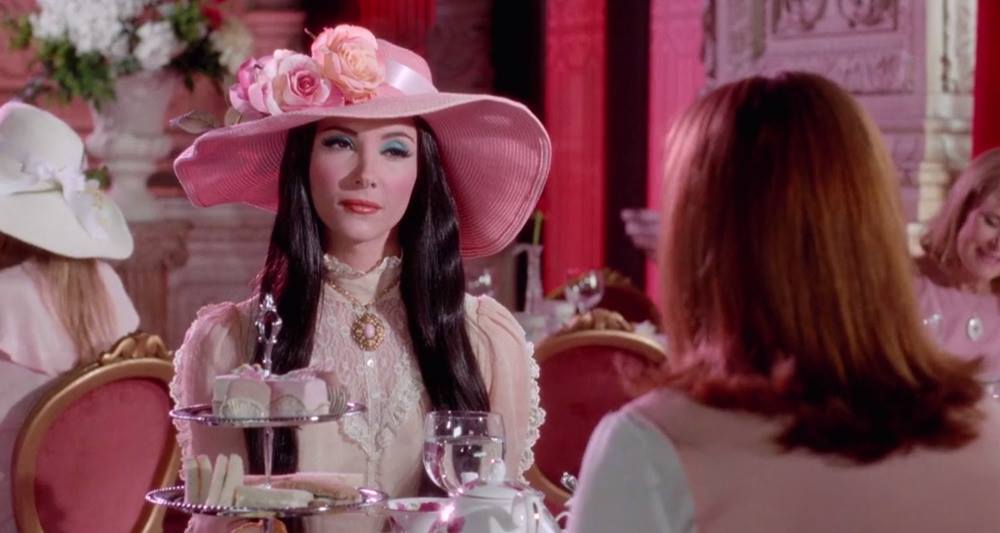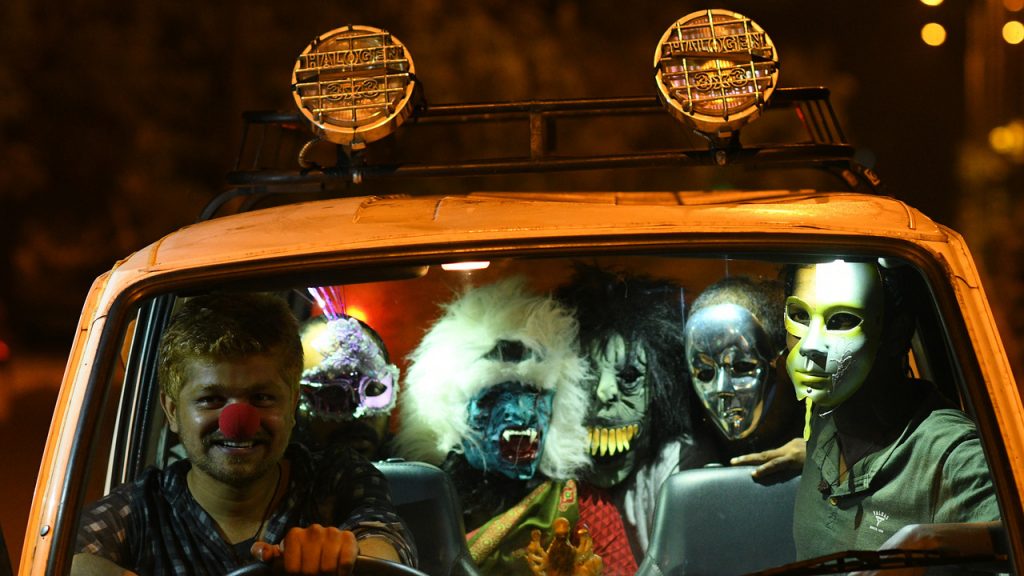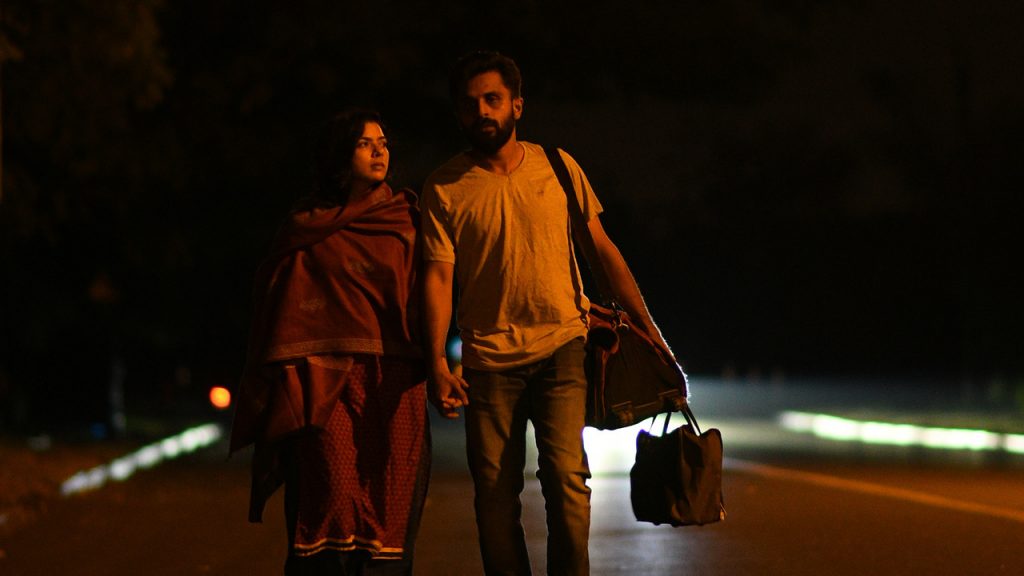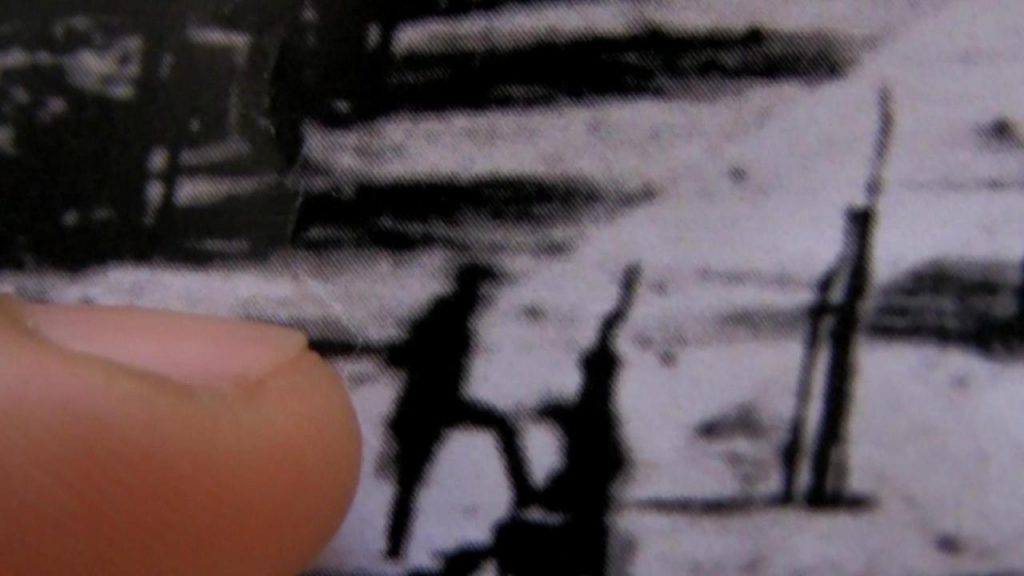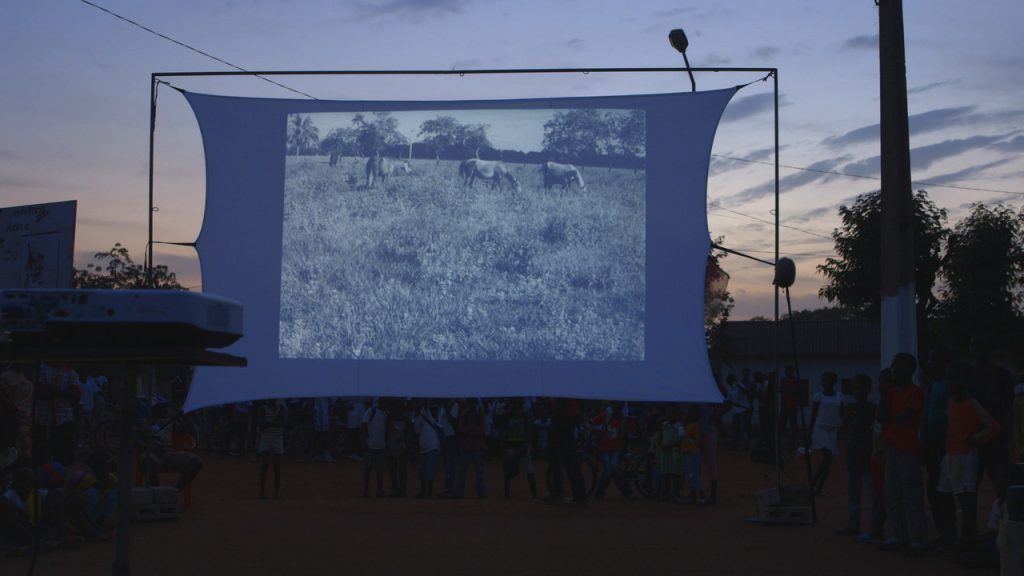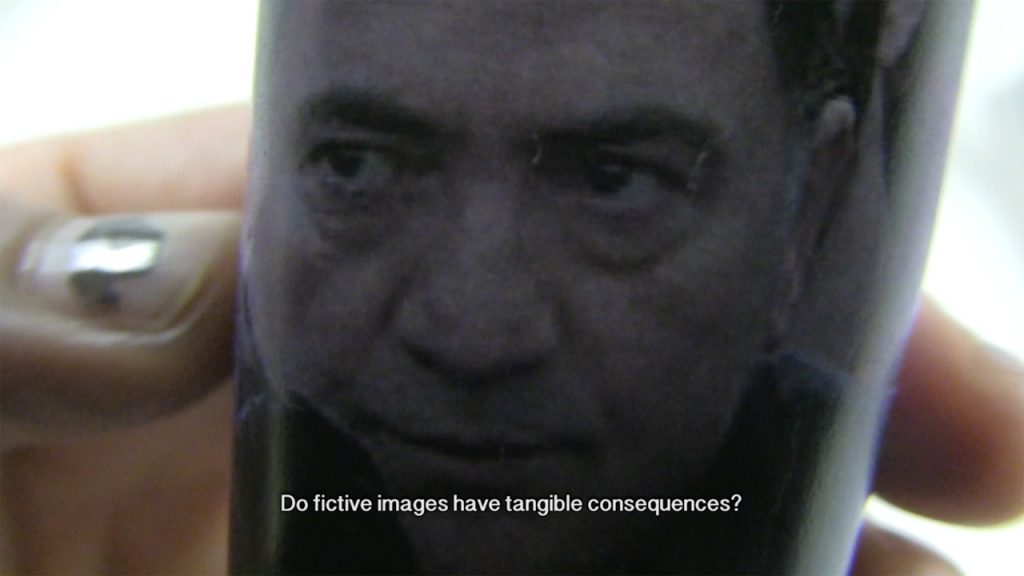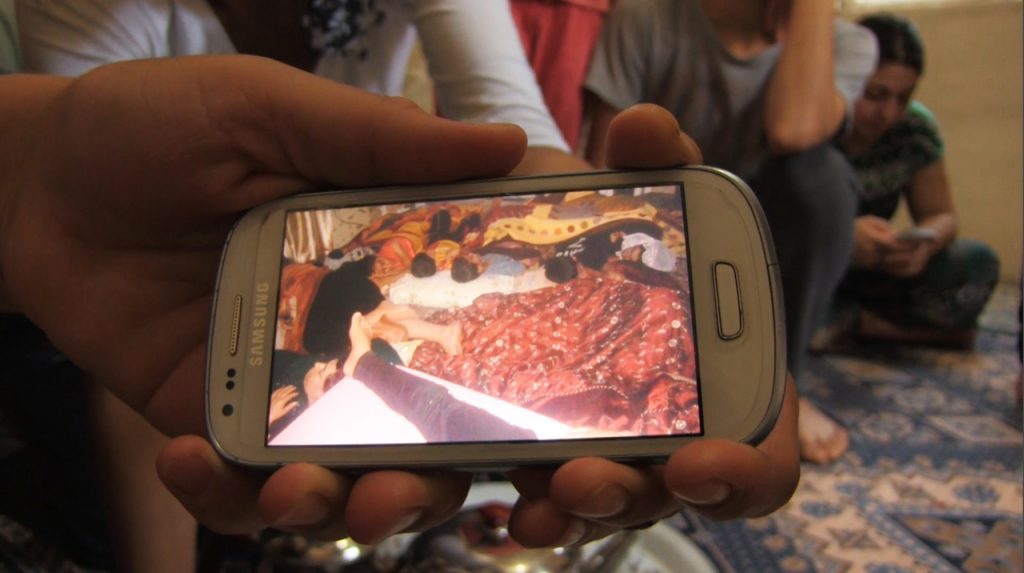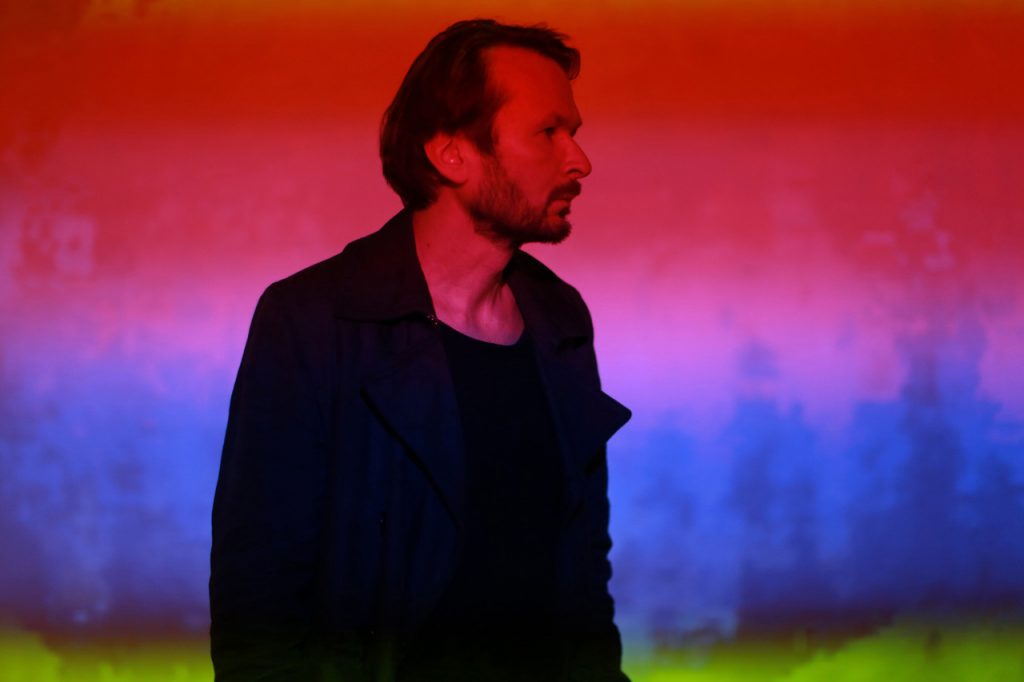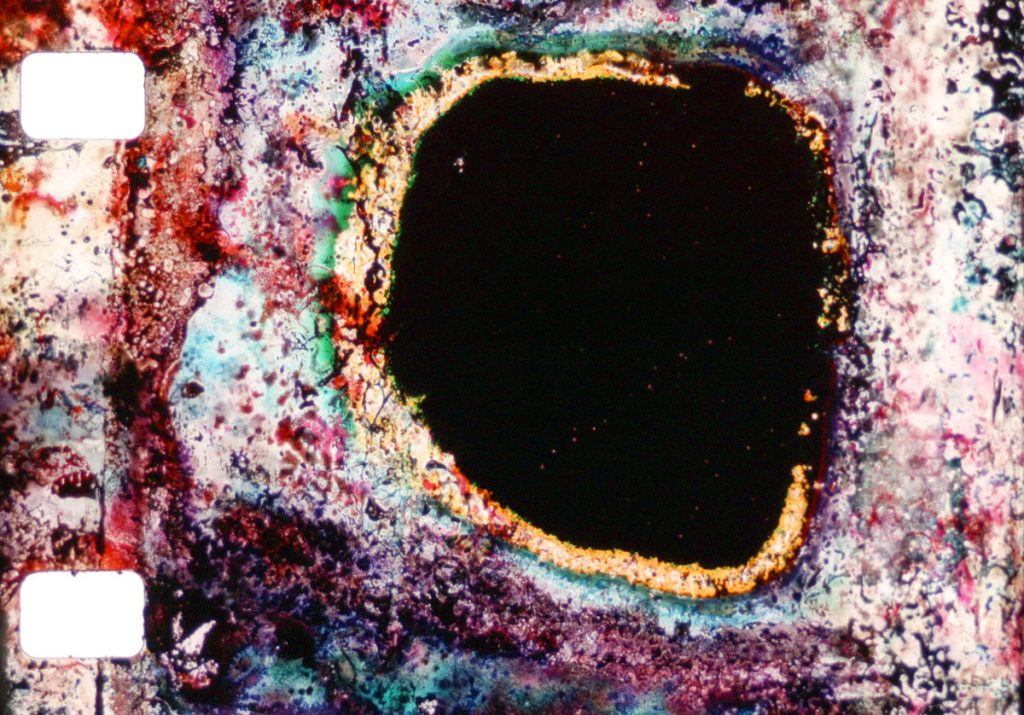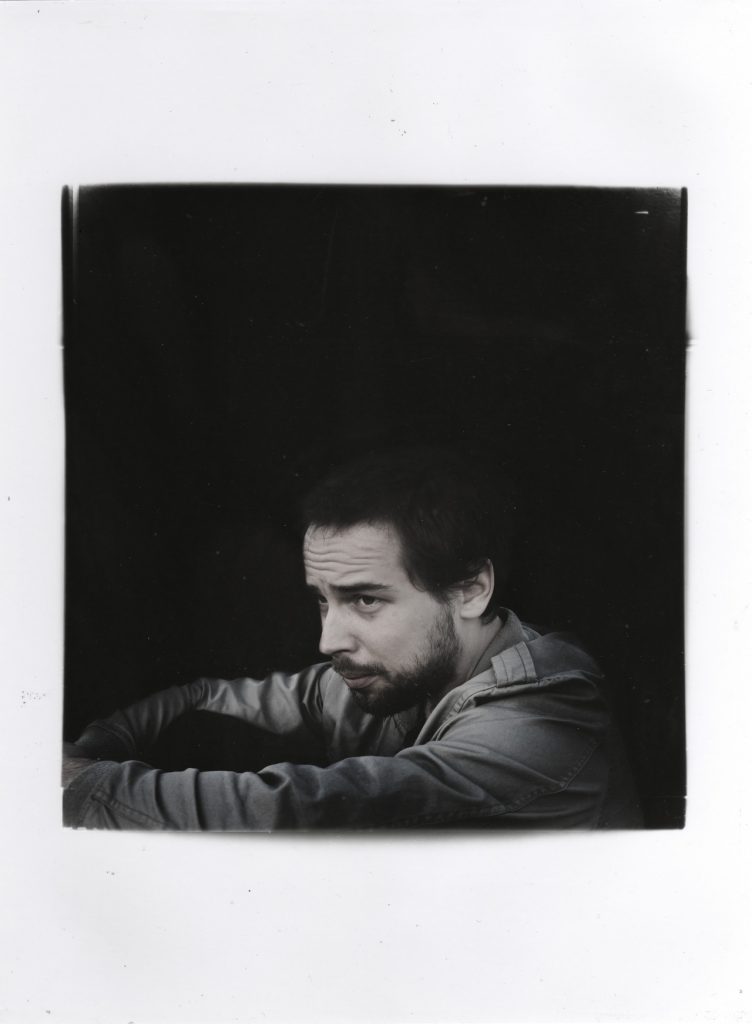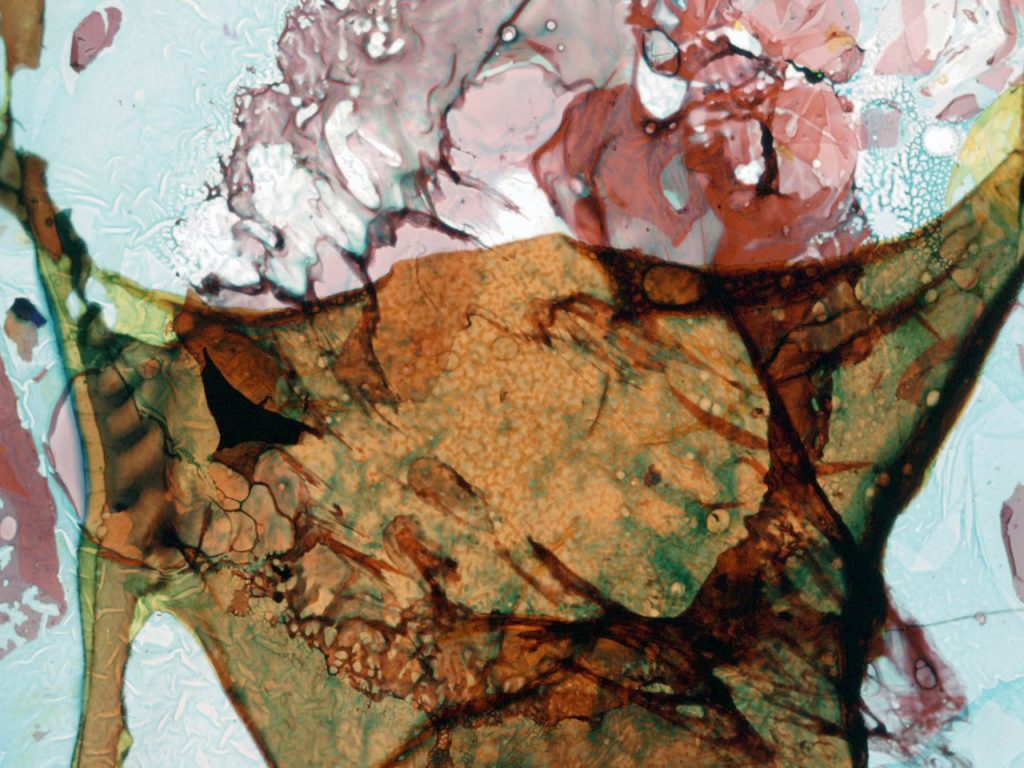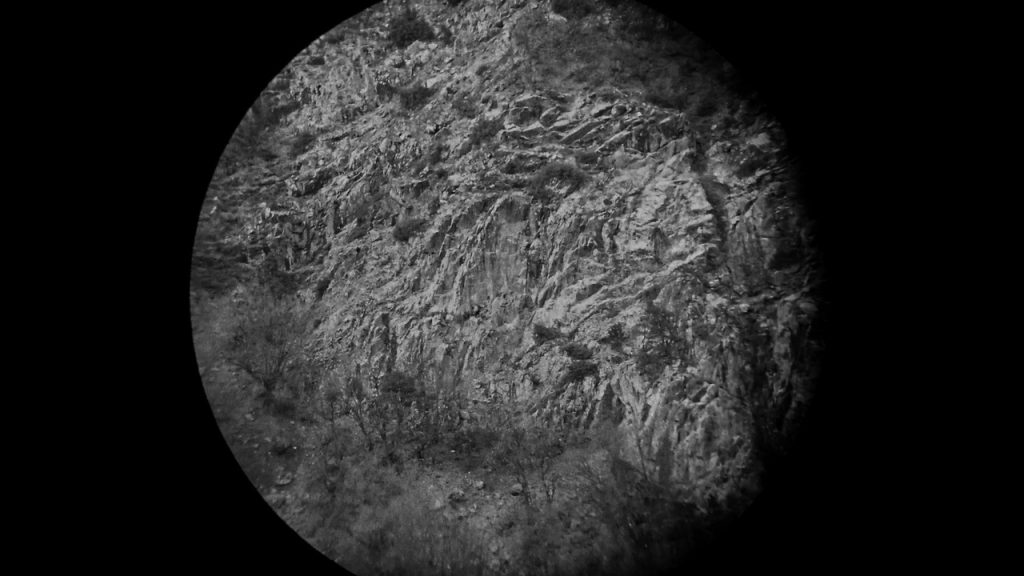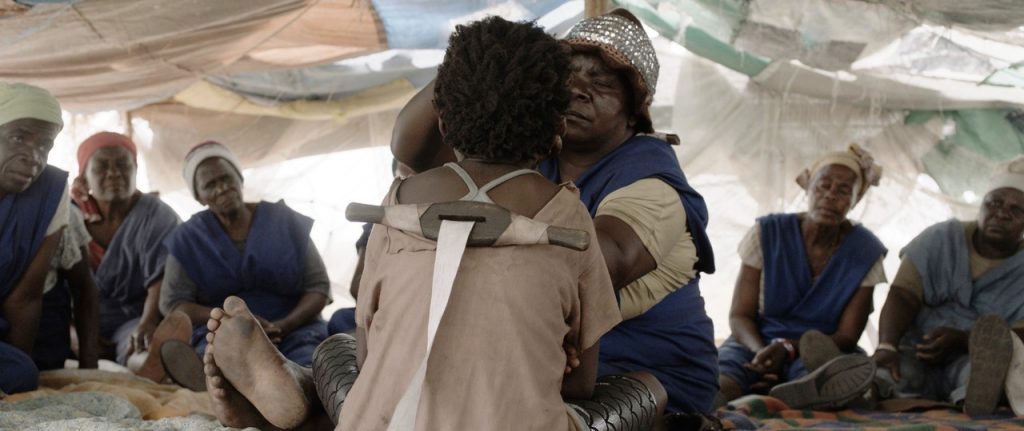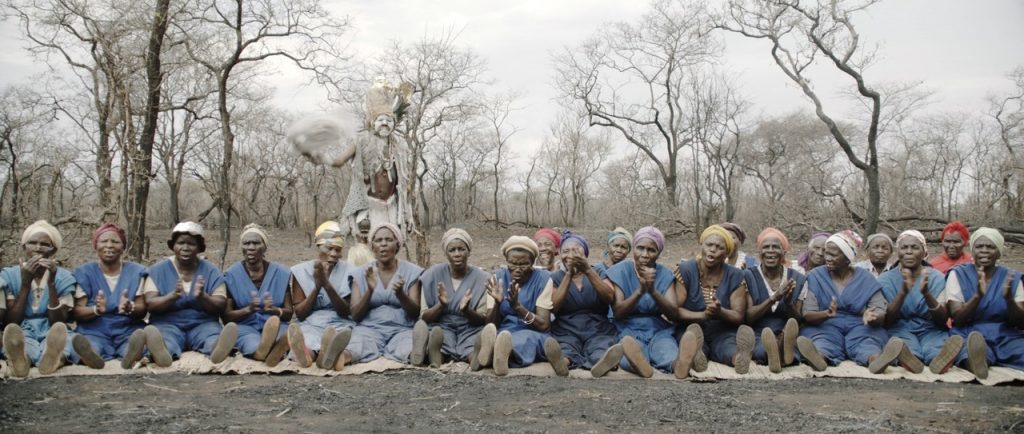Dear GEGENkino friends!
We’ve created a wonderful pre-festival event for you: Two rare 35 mm copies of The Love Witch and Viva by experimental filmmaker Anna Biller are touring the country these days, and on their way they are going to stop by in our beloved LURU cinema in Leipzig on the 1st November 2018 at 7 PM.
| 01 NOV 2018 Luru-Kino | GEGENkino presents |
| 7 PM | VIVA USA 2007. R: Anna Biller, D: Anna Biller. Jared Sanford, Bridget Brno. 120 Min. 35mm. OV |
| 9 PM | The Love Witch USA 2016. R: Anna Biller, D: Samantha Robinson, Gian Keys, Laura Waddell. 120 Min. 35mm. OV |
The Love Witch
USA 2016. D: Anna Biller, D: Samantha Robinson, Gian Keys, Laura Waddell. 120 Min. 35mm. OV
Elaine, a beautiful young witch, is determined to find a man to love her. In her gothic Victorian apartment she makes spells and potions, and then picks up men and seduces them. However her spells work too well, and she ends up with a string of hapless victims. When she finally meets the man of her dreams, her desperation to be loved will drive her to the brink of insanity and murder. With a visual style that pays tribute to Technicolor thrillers of the 1970s, THE LOVE WITCH explores female fantasy and the repercussions of pathological narcissism.
VIVA
USA 2007. R: Anna Biller, D: Anna Biller. Jared Sanford, Bridget Brno. 120 Min. 35mm. OV
Two suburban couples get sucked into the sexual revolution in 1972 Los Angeles. Abandoned by her husband, Barbi is dragged into trouble by her girlfriend, who spouts women’s lib as she gets Barbi to discard her bra and go out on the town. Barbi becomes a Red Riding Hood in a sea of wolves, and quickly learns a lot more than she wanted to about nudist camps, the hippie scene, orgies, bisexuality, sadism, drugs, and bohemia. Saturated to the hilt with vibrant color and exquisite period detail, and full of the kind of innocent nude romps you see before censorship codes lifted, VIVA looks like a lost film from the late ‘60’s, and is a tribute to the best of exploitation cinema.
See you soon!
Oh, the end is drawing near! Today is the last day of this year’s GEGENkino festival and we hope you had some inspiring, insightful and/or intense moments. Thank you all! We’ll close off the festival with two feature films and one short film as part of our programme section “HOW TO RESIST…”: At 6pm at Schaubühne Lindenfels, we’ll screen Sanal Kumar Sasidharan hitchhike/road trip/odyssey film SEXY DURGA, in which “Sasidharan reflects Indian independent cinema’s emerging feminist moment”as some commentators have it. There’ll be an opening film to SEXY DURGA that is JODILERKS DELA CRUZ / EMPLOYEE OF THE MONTH by Carlo Francisco Manatad, one of the most interesting young directors from the Philippines, whose film scene seems to really flourish right now. At 8pm then, finishing off our festival, there’ll be a screening of the Portuguese proletarian strike film THE NOTHING FACTORY by Pedro Pinho – another film that, in portraying a group of factory workers’ struggle for the protection of their job and existence, blends fiction film and documentary in very unique way. (Shot on one of our favourite materials: 16mm!) We hope to see you all again today!
Sun 15 April 2018 @ Schaubühne Lindenfels
6 PM SEXY DURGA (IN 2017, D: Sanal Kumar Sasidharan 85’ OV w/ English subtitles) + opening film: JODILERKS DELA CRUZ / EMPLOYEE OF THE MONTH (PHL/SGP 2017, D: Carlo Francisco Manatad 13’)
8 PM THE NOTHING FACTORY (PT 2017, D: Pedro Pinho 177’ OV w/ English subtitles)
| Sun 15 April 2018 Schaubühne Lindenfels | HOW TO RESIST… |
| 6 PM | SEXY DURGA (IN 2017 D: Sanal Kumar Sasidharan 85’ OV w/ English subtitles) + opening film: JODILERKS DELA CRUZ / EMPLOYEE OF THE MONTH (PHL/SGP 2017 D: Carlo Francisco Manatad 13’1 |
| 8 PM | THE NOTHING FACTORY (PT 2017, D: Pedro Pinho 177’ OV w/ English subtitles) |
SEXY DURGA
IN 2017, D: Sanal Kumar Sasidharan, A: Rajshree Deshpandey, Kannan Nair, Vishnu Vedh, OV with English subtitles, 85’, DCP
At the beginning: white text on black ground. An episode from the epic
poem Ramayana tells the mutilation of the Shurpanakha by Rama’s
half-brother Lakshmana. The black fades out and merges into the feast of
Garudan Thookam in south Indian Kerala, where the bloodthirst of Kali,
an embodiment of the deity Durga, is to be ritually quenched. Bodies are
going into ecstasy, hooks into human skin, masculinity is performed,
mobile phones are filming. Thenchange: a road at night. The young couple
Durga and Kabeer want to get away. She’s a Hindu from the north, he’s a
Muslim from the south. A minibus stops, they get in. SEXY DURGA lets
one experience the attitude and atmosphere out of which sexual violence
could arise in public spaces. Moreover, the attribution of the film’s
title is an affront to religious hardliners. Durga, which is not
associated with a male god, is deeply worshipped in Hinduism. The
eroticised association is provocative, and a figure of that name, which
exposes the mechanisms of patriarchal oppression in a constricting way,
has been the reason for banning the film until recently. Sanal Kumar
Sasidharan deconstructs myths and social dynamics and at it, skillfully
works with expectations and anxieties. The camera is unleashed and free
throughout the film, its two protagonists are trying to follow suit.
Opening Film
JODILERKS DE LA CRUZ
PHL/SGP 2017, D: Carlo Francisco Manatad, A: Angeli Bayani, Ross Pesigan
OV with English subtitles, 13’, DCP
JODILERKS DELA CRUZ (EMPLOYEE OF THE MONTH) depicts an evening at a gas station. The last one of an employee who used to be motivated once. Now, there is only the endless and noisy traffi c, from which hardly anyone ever stops. With her arbitrary actions, the protagonist mirrors the society around her. An amusing, wicked potshot of a film.
15 April, 6 pm – Schaubühne Lindenfels – € 6,5 (5,5 red.)
THE NOTHING FACTORY
PT 2017, D: Pedro Pinho, A: José Smith Vargas, Carlo Galvão, Njamy Sebastião, 177’, OV with English subtitles, DCP
In the middle of the night, machine parts are stolen from an elevator factory. Immediately, the workers realize that the administration has planned this act of sabotage in order to elegantly disappear into the void of financial crisis while merely paying miserable severances at the most. Since a strike, especially if there is no work left, would remain ineffective, the workers turn their protest into an occupation, into a struggle for their right to work. At this point, THE NOTHING FACTORY begins its operation. On grainy 16mm material, Pinho stages bleak rooms as still lives. Framed within these, the workers persevere, play football and chess, and of course discuss empowerment and security issues inside of capitalist employment conditions. Gradually, the group thins out: some of them accept the dismal pay-offs offered in uncomfortable one-on-one conversations. Eventually, the bordeom of the hard core ends up in the performance of a peculiar musical choreography. Due to his reflection on Portugal’s socio-political reality, the film is inevitably reminiscent of classical 1970s strike films such as Petri’s THE WORKING CLASS GOES TO HEAVEN or Fassbinder’s miniseries EIGHT HOURS ARE NOT A DAY, yet it does not ever lose its sense of humor. The film’s self-referentiality, its even documentary context constitute its remarkable stance: nearly the entire cast actually does work in factories, a quirky filmmaker follows the action and there really has been a collectively managed elevator factory.
15. April, 18 Uhr – Schaubühne Lindenfels – € 6,5 (5,5 erm.)
Thank you all very much for the unique evening yesterday! Thanks to Raster, IfZ, Pedro Maia, Robert Lippok, Grischa Lichtenberger, Mieko Suzuki, everyone we forgot and to all of you!
Now it’s only two more days of GEGENkino for this year—both of which will be under the question that we concerned ourselves quite a lot with is curating this year’s program: how to resist (on screen)? What is politically involved filmmaking, film activism, what are cinematic forms of resistance …? Today and tomorrow at Schaubühne Lindenfels we want to introduce new and interesting positions in regard to those questions to you.
Starting off today at 6pm with a panel discussion that we put under the headline “The Streets Are Not Enough – How To Resist On Screen“. Artists/activists Angelika Nguyen, Julia Lazarus and Filipa César will be on stage joined by Claus Löser who’ll do the moderation. Read more about the panel and the people on the panel below or in our programme booklet: http://2018.gegenkino.de
Afterwards, we’ll have a double screening of tho filmmakers, whose work and whose form of political film/video art we found very salient.
At 8pm, Filipa César will present her most recent feature-length film SPELL REEL—a cinematic essay about the importance of film archives in retracing the history of colonialism (in this particular case , the history of the liberation war in Guinea-Bissau). There’ll be a Q&A with Filip César after the screening.
At 10pm, we’ll show a selection of works by Turkish video artisst belit sağ. Her questioning of the image and the tracing-down of the ideology that flows in every picture puts her work in kinship with those of Hito Steyerl and Harun Farocki for example.
| Sat 14 April 2018 Schaubühne Lindenfels | HOW TO RESIST… |
| 6 PM | The Streets Are Not Enough – How To Resist On Screen TALK w/ Angelika Nguyen, Julia Lazarus, Filipa César & Dr. Claus Löser |
| 8 PM | SPELL REEL (D/PT/F/GNB 2017) D: Filipa César 96’ OV w/ English subtitles |
| 10 PM | belit sağ – Störfeuer im Bedeutungsraum SHORT FILM REEL (NL/TR 2014-2017) Σ 60’ OV w/ English subtitles |
Podium mit Filipa César, Julia Lazarus, Angelika Nguyen & Claus Löser
THE STREETS ARE NOT ENOUGH! HOW TO RESIST ON SCREEN
Um darüber sprechen zu können, an welchen Orten und auf welche Weisen wir mit filmkünstlerischen Positionen Hierarchien aufbrechen und Ungerechtigkeiten entgegentreten, muss der diesjährige Podiumstitel The Streets Are Not Enough! How To Resist On Screen zusätzlich umgekehrt werden. Denn einzig Straßen und Räume sind für die Artikulation von Protest nicht genug. Ebenso wenig funktionieren audiovisuelle Werke widerständigen Denkens losgelöst von bestimmten Orten der Rezeption oder deren gezielten Einbettung in öffentliche Diskurse. Es sollte also gleichermaßen gelten: Just Films Are Not Enough! Nicht zuletzt sind Filme selbst ebenfalls Orte der Imagination, Erfahrung und Auseinandersetzung, deren Herstellungsbedingungen, formale Ästhetiken und Intentionen maßgeblich mit Räumen und Strukturen zusammenhängen, die FilmemacherInnen beim Arbeiten vorfinden, die sie einfordern und im besten Fall auch mitgestalten. In filmischen Narrativen werden zentrale Themen gesellschaftlichen Zusammenlebens wie Rassismus, Identität, Ausgrenzung und Teilhabe konstruiert, verhandelt und in Beziehung gesetzt. Ist dabei die Zielsetzung nicht stets einen unausgesprochenen Scheinkonsens fortzubeten oder fundamentale Ungerechtigkeiten auszuklammern oder schönzureden, müssen die genannten Aspekte divers gedacht, unangenehm perspektiviert und widerständig in Szene gesetzt werden. Wir als Filmfestival stellen uns die Frage, wie eine Gesellschaft, ein Festival, Kollektiv oder Ausstellungsraum dazu beitragen kann, involvierende Kunst angemessen zu präsentieren und zu fördern? Welche Machtstrukturen begünstigen Verbote und Verfolgung? Welches Spannungsverhältnis besteht zwischen etablierten Produktions- und Distributionswegen und davon unabhängigen Formen? Was kann wo, wie erzählt, gezeigt, angegriffen werden? Wann wird ein Bild zum Gegenbild? Wie sehen Gegenbilder aus und: Gibt es so etwas überhaupt? Darüber unterhalten sich auf unserem Podium in der Schaubühne Lindenfels Angelika Nguyen (Filmwissenschaftlerin und Kritikerin), Julia Lazarus (Filmemacherin und Kuratorin) und Filipa César (Künstlerin und Filmemacherin) in einem ca. 90-minütigen Gespräch, moderiert von Claus Löser (Autor und Kurator). Gespräch in deutsch.
14. April, 18 Uhr – Schaubühne Lindenfels – Eintritt frei
Angelika Nguyen, Jahrgang 1961, studierte an der HFF in Potsdam- Babelsberg Filmwissenschaft, arbeitet als Filmjournalistin, Referentin und Aktivistin. Thematische Schwerpunkte: filmische Darstellung von Minderheiten, Ausgrenzung und Rassismus; Darstellung „wahrer Begebenheiten“ in filmischen Erzählungen; Film als politische Reflektion seiner Zeit; Widerstand gegen Mehrheitsgesellschaft im Film; Erzählstrategien in Dokumentar- und Spielfilm.
Julia Lazarus ist Künstlerin, Kuratorin und Filmemacherin und lebt und arbeitet in Berlin. Sie studierte an der Universität der Künste Berlin und am California Institute of the Arts in Los Angeles, USA. Ihre Filme sind im Vertrieb bei Sixpackfilm Wien und bei e-flux, Berlin/New York. Ausstellung und Screenings u.a.: Depo Istanbul, District Berlin, IG Bildende Kunst Wien, Galerie Funke Berlin, Schwules Museum Berlin, Manifesta Murcia, NGBK Berlin.
Filipa César, Künstlerin und Filmemacherin, lebt seit 2001 in Berlin. Ihre Filmische Arbeiten stellen performative Räume zur Verfügung, in die sich subjektives Wissen und Gegenerzählungen einschreiben können. 2011 initiierte Filipa César das Recherche-Projekt „Luta ca caba inda“ mit dem sie uunter anderem an „Living Archive“ und „Visionary Archive“ beim Arsenal – Institut für Film und Videokunst beteiligt war. César prämierte ihren ersten feature-length Dokumentarfilm SPELL REEL im Forum der Berlinale 2017. Screenings ihrer Filme u.a. in: Kurzfilmtage Oberhausen, International Film Festival Rotterdam, DocLisboa, Istanbul Biennial, Tate Modern London, São Paulo Biennale, Jeu de Paume Paris, mumok Vienna, MoMA New York, Sonic Acts Amsterdam.
In Anwesenheit von Filipa César.
SPELL REEL
D/PT/F/GNB 2017, DOK
R: Filipa César, OmeU, 96’, DCP
Die Anfangssequenz, Bild im Bild: Auf dem Kopf stehendes, deutlich in Mitleidenschaft gezogenes Filmmaterial eines Waldgebietes. Parallel erscheint ein Schriftzug, der die zu sehenden Menschen als UnabhängigkeitskämpferInnen enthüllt. Die analogen Aufnahmen werden vorübergehend von Digitalbildern ersetzt, diese verdrängen die analogen jedoch nie vollends – durch die phasische Überlagerung der verschiedenen Materialien wird sukzessive ein Nebeneinander arrangiert. Cesar verknüpft auf diese Weise Archivaufnahmen aus der Zeit des Befreiungskrieges in Guinea-Bissau (1963-74), gefilmt von Guerillakämpfern Sana na N’Hada und Flora Gomes, mit Aufzeichnungen jüngerer Geschichte. Changierend zwischen Vergangenheit und Gegenwart inszeniert die Regisseurin Narrative, die sich permanent im Prozess befindend. Initiiert durch das Projekt „Visionary Archives“ des Arsenal Berlin ist SPELL REEL ein Rechercheprojekt, dass durch Reinszenierung von kurz vor dem Verfall stehendem filmischen Material zumindest fragmentarisch einen Teil der Geschichte des guinea-bissauischen Unabhängigkeitskampfes dokumentiert.
belit sağ – Störfeuer im Bedeutungsraum
AND THE IMAGE GAZES BACK(NL/TR 2014, 10’, englische OV, DCP)
MY CAMERA SEEMS TO RECOGNIZE PEOPLE (NL/TR 2015, 3’, OmeU, DCP)
SEPT. – OCT. 2015, CIZRE (NL/TR 2015, 15’, OmeU, DCP)
AYHAN AND ME (TR 2016, 14’, OmeU, DCP)
IF YOU SAY IT FORTY TIMES… (NL 2017, 5’, OmeU DCP)
GRAIN (NL 2016, 5’, OmeU, DCP)
DISRUPTION (AKSAMA) (NL 2016, 5’, OV, DCP)
CUT-OUT (NL/USA 2018, 4’, OmeU, DCP)
Die Arbeiten von belit sağ sezieren die komplexen Zusammenhänge von Bildproduktion und Ideologie, Sehgewohnheit und Normierung. Als Teil des Kollektivs „artıkişler“ und Mitinitiatorin verschiedener Projekte, etwa des unabhängigen, digitalen Archivs „bak.ma“, ist die in Amsterdamlebende Künstlerin stark verwurzelt im sozialkritischen Videoaktivismus aus Ankara und Istanbul. Ihre Bilder und Themen kommunizieren innerhalb der einzelnen essayistischen Werke und zwischen ihnen. Sie schaffen einen konkreten Anspruch an die Zuschauerschaft, sich aktiv zum Gehörten und Gesehenen zu verhalten. belit sağ zeigt, verweigert, zoomt, überlagert, verwischt, fragt und kommentiert. Bilder der Gewalt und die Gewalt der Bilder führen zu Überlegungen über Krieg, staatliche Repression und Widerstand. Die Verwebung ihrer subjektiven Perspektiven mit öffentlich verfügbarem Material schafft die Möglichkeit einer Re-Kontextualisierung, ein Aufbrechen von Hierarchie, Determination, Linearität und Bedeutungskonstruktion. Das eigene und das kollektiv geteilte Bildgedächtnis verhalten sich zueinander, irritieren und befruchten sich. Welche Verantwortung haben wir in Zeiten sozialer Krisen im Umgang mit der täglichen Bilderflut? Was sind die Bedingungen, die wir an unser eigenes Sehen stellen und die Kriterien seiner potentiellen Lenkung? Der Beschuss der kurdischen Stadt Cizre, die Medienstrategie des IS, die Bedeutung von TV-Sendern für Staatsstreiche, die politischen Morde in der Türkei der 1990er, die Opfer des NSU sowie populäre Ikonografien und Zensurbestrebungen sind multiple Facetten einer permanenten Dekonstruktion von Erinnerung, Repräsentation und Geschichte.
We’re so excited about tonight! In cooperation with experimental electronic music vanguards Raster and Institut fuer Zukunft we compiled this special event and have a bunch of great people coming to GEGENkino today:
Portuguese collage filmmaker Pedro Maia will be there tonight to screen his work WASTELAND—on three 16mm projectors simultaneously! The screening will be accompanied by an exclusive live score by Robert Lippok (To Rococo Rot).
Robert Lippok will kick off the evening with a solo live set that will start at 9:30pm. After that, Pedro Maia will join in and project WASTELAND. The screening is followed by an audio-visual live set of his labelmate
Grischa Lichtenberger and a DJ set by Mieko Suzuki that will steer you through the rest of the night. Moreover, there’ll be a little installation with video works from the Raster archives. Prepare to be surprised!
[Tickets are still available at the doors tonight. People with a GEGENkino festival ticket have to pay a small additional charge only.
| 13 April 2018 Institut für Zukunft | LIVE SET |
| 9 PM | Robert Lippok (Live-Set) |
| 10:15 PM | Robert Lippok vertont WASTELAND (2015, Pedro Maia, 30’, stumm, 3x16mm) |
| afterwards: | Grischa Lichtenberger (live a/v set) Mieko Suzuki (dj set) |
Plus: INSTALLATION of Raster video works
Raster | Maia | Suzuki | Lichtenberger
Pedro Maia: http://www.pedromaia.net
Robert Lippok: https://soundcloud.com/robert-lippok
Grischa Lichtenberger: https://soundcloud.com/grischenka
Mieko Suzuki: https://www.mixcloud.com/MIEKO
Raster: https://www.youtube.com/user/rasternoton
For more than 20 years, Raster (formerly known as: Raster Noton) has
established a label that not only stands for a specifically distinct techno and experimental sound, but also for a collective platform that frequently serves as basis for collaborations with artists from various
disciplines. The evening will be opened by an encounter of digital and
analogue: as a premiere and exclusively for GEGENkino, Robert Lippok
adds a live score to WASTELAND, a 16mm-film performance of Portuguese artist Pedro Maia.
The title literally refers to the origin of the filmstrips shown: they are seemingly useless waste, faulty exposures, they are discarded material from an analogue film lab. The colours of WASTELAND are less reminiscent of barren or bleak landscapes but rather remind of Stan Brakhage’s chemical experiments. That means that after being exposed to toxic processes, the images turn into pure colour fields. Maia’s three projectors animate them, let fissures and stains flicker, let veinlets, scratches and debris whirl. After an additional live set by Robert Lippok, Grischa Lichtenberger will present his audiovisual live performance. Raster resident Mieko Suzuki will then end the showcase. Besides, various Raster video works are installed and displayed all night long. They are representative for the close involvement with computers and their audiovisual capabilities – a constant topic that steadily forms the objectives of the label.
Woah, what a show! Thanks a lot to Tomaga, UT Connewitz and everyone involved and of course thanks to all of you for coming around!
Today we’ll continue at Luru Kino with two films that we found particularly important to show and are happy to have in our programme. At 8pm there will be the German premiere of Gürcan Keltek’s METEORLAR – a very up-to-the-minute film as it deals with the situation of Kurdish people in the southeast in Turkey. METEORLAR intermingles documentary, journalistic and fiction filmmaking, uses landscape portrayals, poetry, interviews and acting, and in doing so creates a very unique cinematic language. Don’t miss it!
At 10pm, we’ll have a screening of I AM NOT A WITCH – Rungano Nyoni’s singular, strange Zambian witch-hunt fairy tale. Here’s a quote by Nyoni from an interview for MUBI Notebook: »I wanted to make it a fairy tale because I found a really good Zambian way of saying the story, without making it about Zambia. I grew up on fairy tales. I’ve always wanted to do this, actually. In a way, I was trying to get away—perhaps as a first-time filmmaker this is a bit of a cliché—I was trying to get away from ›the arc.‹ It’s always ›the arc, arc, arc arc,‹ and I was trying to do something different. I was trying to do something that I grew up with, which is that my family used to tell me fairy tales and they were really particular. Fairy tales in general are very strange, but Zambian ones mix genres. They’re for kids, but they’re really violent, and they’re funny, and they mix magic realism. All of these things I wanted to take for my film. They are really musical. I was trying to do that.«
Make sure to be on time for both films as the seats at Luru Kino are quite limited. / Da die Plätze im Luru Kino recht begrenzt sind, empfiehlt es sich heute besonders pünktlich zu sein.
| Thu 12 April 2018 Luru Kino | |
| 8 PM | HOW TO RESIST… METEORLAR / METEORS (NL/TR 2017) D: Gürcan Keltek 98’ OV w/ English subtitles [German Premiere] |
| 10 PM | JUNG & FRISCH I AM NOT A WITCH (GB/F/D 2017) D: Rungano Nyoni 98’ OV w/ English subtitles |
Germany Premiere
METEORLAR / METEORS
NL/TR 2017, Dok., Director: Gürcan Keltek, OmeU/OV with English subtitles, 84’, DCP
Shadows, specters, stones and snow blend into each other. Hunters are fixing a flock of ibexes from a dis-tance. Grainy, flickering images, a circular aperture. Just like the beginnings of cinema. Coming from a world in between. Then the hor-rors of war, jet fighters, explosions, bullet holes. In the streets: anger and resistance. Finally, the camera tracks writer and actress Ebru Ojen Şahin, whose lines accompa-ny the elegiac black and white. A holy mountain, religious statues, a solar eclipse, meteor showers. A film that works with documentary and fictional fragments, that picturizes claustrophobically and celestially by turns, that is charged with symbolism and political topicality, all of it consistently highly remark-able. METEORS wants to break the silence, create counter images, and testify. In its poeticized style, it merges natural mysticism with an outcry against state oppression, mountainous regions of Southeastern Anatolia with the urban landscapes of besieged towns. How shall one remember what must not ever have taken place?
I AM NOT A WITCH
GB/F/D 2017, Director: Rungano Nyoni, Actors: Margaret Mulubwa, Henri BJ. Phiri, Nancy Mulilo, 98’, OmeU/ OV with English subtitles, DCP
The fact that Shula does not have any magic powers but is a hardly ten year-old child on her own, becomes clear to everybody immediately at the beginning. Nevertheless, she is nearby when a woman tumbles while getting water. Absurd! But reason enough for a Zambian village commune to accuse her of witchcraft. The verdict is delivered fast and silent Shula is brought to a witch camp where she is displayed as an attraction for westeners shooting selfies. However, from the elder witches, she receives protection and a community spirit. After the government official Mr. Band de-clares: “You are my little witch now”, a grotesque course starts to evolve. In I AM NOT A WITCH, Rungano Nyoni deals with topics of misogyny and superstition, but also the presence or absence of female empowerment as well as the solidarity among the oppressed. Narratively, the film oscillates between blackly humorous satire, fairy tale and feminist and global criticism precisely boiled down to an essence.


